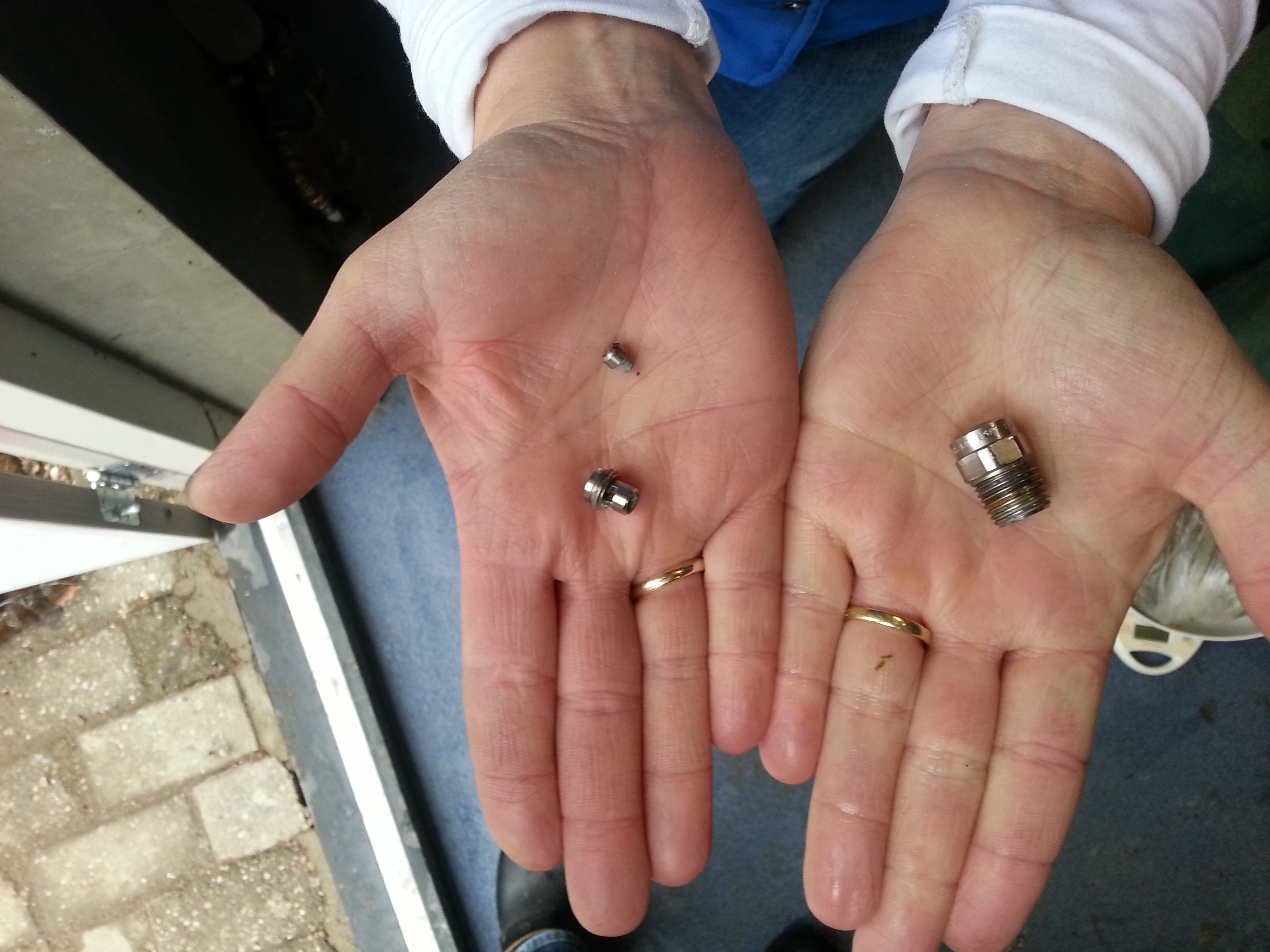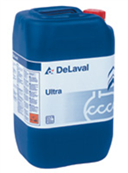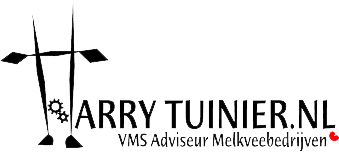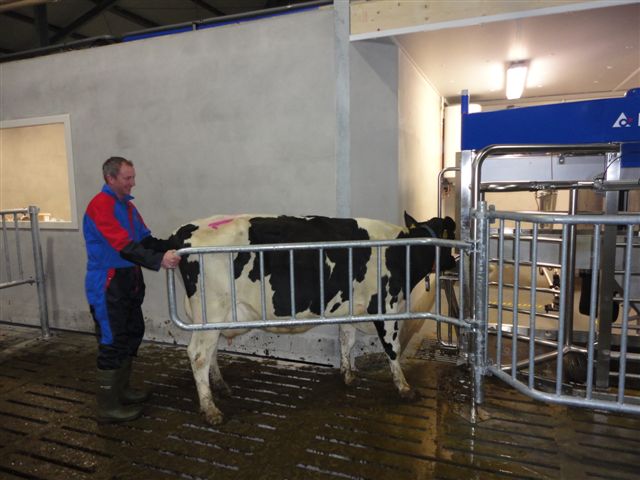TIPS FROM 2012
December:
Compensationg Roughage when it’s not as good as analyses thinks
2012 was a special year of growth. In most places felt more than enough rain, good temperatures but with less sunlight. That gave a lot of grass growth. If a cow gives much milk she gets some more kilograms of concentrate. The grassland gets often no extra fertilizer and as a result there is a lot of grass silage won with less energy. Less sunlight means less sugar, and that means less tasty ….! Bacteria need sugars what they use to make lactic acid. This is necessary for the silage to succeed well.
These bacteria grab their part so your silage and the analysis seems all right. But too little sugar left for the taste. Usually, we are happy if you do not cut for your silage to short, but this year seems longer mowed grass at a disadvantage with comparatively much stalk and less energy and taste. And crude fibre is inherently uncomfortable. Additionally, you might not always have the opportunity to mow in the afternoon or evening, which also gives more sugars in the silage.
It seems not always to be seen in the silage analyses that we get disappointing results because the cows make far too little from your roughage. (How quick that goes see Tip sept. 2011). Roughage consumption is easy 10-20% lower when a cow comes less to the feed fence or already stops eating as the biggest draw is resolved ..
- Do the analyses show same numbers as your eyes and hands?
- Does your ration to feed fence have enough flavour?
- Can you e.g. longer, shorter or otherwise different silage mix to feed?
- Do you compensate what is missing?
For example:
Good silage, good analysis but they eat too little: Molasses??
Moderate silage, too little energy, sugar and flavour: Press Pulp??
Many crude fibre but is not sufficiently digested: Brewers’ grains??
Especially since food purchases this year is very expensive, it is very important with your (feed) advisor to see which supplement is good and which is not good for your business. If you can control that the costs might not go too heavy.
November:
Good working teat disinfection
Autumn has made its entrance, and to your hands and face You probably notice that the autumn / winter also deals rougher with your skin. And that happens also with the skin of the teats of the cow!
Last year, especially after the heavy frosts, here and there the teats became quite chapped and that gave that milking was less pleasant for cows and the teatlockers closed less good after milking! This has a few weeks after that resulted in more mastitis!
So please make sure if your disinfection system does its work good: DeLaval can make good programs, but cannot control! Does it spray well, covers well, not (bit) clogged, etc. If it does not spray correct then you must disassemble the nozzle, key 14, and with screwdriver inside, 3 particles apart. Clean this well with hot water and brush or use a small screwdriver to scratch out. And / or with air blowing. Then on touchscreen once testing (VMS Menu => Robot => Service => Start Disinfect Pump), clutter flow out, and then reassemble, metal on plastic so not too tight, “hand tight”.
It is also wise for ex ample, after a disinfection can is empty, to rinse the whole system. Take off the nozzle and the (milk) filter in the can and flush the system with warm water. After that put a new filter on the weight in the can and the disinfection system works perfect again.
ample, after a disinfection can is empty, to rinse the whole system. Take off the nozzle and the (milk) filter in the can and flush the system with warm water. After that put a new filter on the weight in the can and the disinfection system works perfect again.
Also take care that the system will not get frozen!
And of course it is important what product do you use: it must have good antibacterial, skin care effect and work well with your installation!
One mastitis more or less or cows who like less to be milked because they have sensitive nipples is quickly more expensive than what you save by using inexpensive products.
DeLaval has e.g. “Pro-Active” dip and that has been specially developed.
Should you opt for something else than take care that your choice has the same minimal antibacterial disinfectant and udder care effect!
October:
Oriented feeding expensive protein concentrate.
As it looks at present is that the amount of protein in the grass silages is lower than other years. The grass grew quickly and much but had to do with the same fertilization.
And buying extra protein looks to be expensive.
Except that protein is a useful and necessary supplement for the cow it is also very conducive for milk: protein stimulates milk production. But for to keep that full production the cow has to eat also much energy. If every cow can, that is the question!
So a very good reason to control to feed which cow what! For feeding for example soya / rape meal at the feed fence bossy cows often see their chance to eat their part plus a bit of the neighbor, or a lower ranking cow, or a cow is still in a box, to steal away. Then there can be easily go expensive food to the wrong cow. And especially when milking with a VMS, we hope that cows come often to the feed area but not at the same time!
Taking away concentrate products from the feeding fence means you get a lower basic ration and thus more opportunities as gift in VMS. It’s definitely wise to feed skinny and / or sick cows and heifers a half to whole kilo concentrate with high protein less than their herd mates. That’s not good to increase the production but the cow is recovering easier or the (small?) heifer gets the chance to grow into a stronger older cow.
And: “the last litre” for high productions this year could be very expensive!
How much milk can your cows give from basic ration + minimum gift in the VMS?
Go to the Status Board and sort on “Avg. daily Yield last 7-days” average and see how many cows produce less.
September:
Regular calibrate concentrate
As you know, concentrates do not always have the same weight. And because a VMS, but also feeding station, is volume dosing it is important to calibrate regularly. As you know: one liter of lead weighs considerably more than a liter down. But we see that concentrates sometimes is 10-30% heavier or lighter than your previous feed. That means that if the VMS does not know you might feed much % more or less concentrates as you think and calculated.
How do we calibrate? On the touchscreen, we go to “VMS Menu”, then “Stall” and then we choose “Service”. On the far right “Calibrate”, including the third button “Feeder”.
If we press, we come to the calibration screen. These four buttons you scroll through by clicking the “next” button.
Start with making the manger good clean. So you choose which method and with the next button which “Feeder” type. Choose always to “Repeat 3 times” as it is and remains a sample. Then with “Collecting” is the concentrate going to fall, it must accurately been weight and if you have pushed “Repeat 3 times” recalculated again by three parts. (Also read the description on the screen).
Then we go to the PC and we open “Device”, and “Alpro WE” to the station which is calibrated. Then it says in the lower block “Dispenser Name” and choose the type of feed you have calibrated. If you double click the screen will appear where the “Calibration Constant” has to be put in.
It is wise to do this anytime if you chance feed type, feed supplier or otherwise altered but also, for example 1x every three months. This assignment can be put in the “Service Timers”.
August:
Cleaning rubber flap
For many farmers is the rubber flap that the teat cups captures a source of irritation to keep clean. And if he is not clean, it is also a source of bacteria and germs.
In addition to our Belgian farmers more, it also can affect the number coli in milk!
A tour along our mechanics gives the following tips:
A good method is the rubber flap just to inject a solution of Ultra combined detergent.
Well let soak, then with the brush or similar cleaning.
Note also the inside.
At least 1 time a week.
It is ideal when you have hot water available on the hose to the VMS.
Replacing the flap, as he no longer wants to clean or if he’s around / warp. Because then bacteria and germs too settle easily.
Not skimp on, but with good treatment the rubber flap can last years.
July:
Three or four teats to milk
With robotic milking you see often big differences in production per quarter of a cow. Often there is an old mastitis where it comes from but there can be also another reason that the cow is (become) unequal .
Almost always, this milk is of poorer quality. But you do not always see this in the SCC because the amount of this quarter is so little to the other three. However, the robot often has more work to find the teat and the cow will find it less enjoyable to be milked. Especially when the production of such teat goes near or below 0.3 kg per milking, the robot will take off the teat cup and then re-hang. Sometimes several times. This is what the cow does not like, she finished her food, emptied her udder, and wants to leave.
We see therefore often that, when farmer programs this cow as “three teat” , the cow likes the milking much more, and therefore likes to come to the VMS more often, and with ease produces with the three teats more milk as with four teats previously. In addition, the milking time also will considerably be shorter, more comfortable for the cow and time saving, also interesting for the farmer!
How to make a cow three teat?
If the other milk may go to the tank: Penicillin is excluded!
When you decide on time it is possible to dry the teat in the VMS PC and then the next day by hand milk/check the wrong teat, then wait 2 days and repeat emptying, wait 3 days and empty. Do this until you are confident that the teat dries without complications.
Depending on the cause, there are cows who will be next year even back four teats.
Is a cow infected heavier or with cow related bacteries than the vet has an effective tool which makes the cow final three teat but also “burns out” the (sub) clinical mastitis.
June:
Read back previous tips
It is now June 2012 and that means there are now 2 years’ Tips of the Month “on this site.
And DeLaval itself has not been idle as well. In particular, the latest generation robot has become even more reliable, and further developments, which is supported by the program Delpro, gives many opportunities to score with your cows!
And when you have been using a VMS milking for more years, you have the option to choose whether you want to use the latest developments or not.
I would therefore make the statement that when you are using a DeLaval VMS your cows have to give more milk than before, with at least equal and preferably lower cell count, but also milk better than colleagues who do not have DeLaval.
This is mainly because of the milking technique, and because the program Delpro, but most important: you as “cow watcher” are still central, the key to combine these posabilitys!
See it this way: DeLaval VMS and the programs give the passes and you score the goals!!
Take a look at two years tips after another and if you think that your results can get better let me know.
Do not be satisfied with an average result. We are not either !!
And if prices come under pressure again than you cannot …
Read this story (at first here was a story about a farmer in Sweden, now this article is even more worth reading): http://thenavigator.delaval.com/top-vms-producers-honored-in-vegas
May:
Cows too cramped in VMS
After first day milking with VMS or at the start with new heifers or new cows, it is recommended to close them first a bit tight in the VMS. If the cows are used to be milked in the VMS that is just not good because:
- They stand not good, quiet and sometimes almost crooked
- They spill more feed
- Especially higher rear teats are more difficult to connect
- With 2 mirrored VMSs on one VMS group, the cow is curved to the left in one VMS and curved to the right in the other …, so the udder is also in a different place and is therefore more difficult to find for the robot.
- VMS starts as backdoor is closed properly and that takes longer. And of course, much longer for large or thick cows.
So make sure that cows stand comfortable and also check that the back door closes correctly, not to narrow or too wide.
The manure plate has to keep moving when the cow stands against it.
April:
Back-up on the right place
There is another computer from a VMS stolen ….
So farmers: Be warned!
Of course by trying to keep burglars outside your door, but also change regularly the USB stick with backup and store one in house or at least not round the PC !
That was the case and all backup information was also gone ….
March:
Easy reading on PC and Touchscreen
Many “less young” farmers have old reading glasses laying at the computer in the farm office.
If you cannot look good, not easy, it is logical that you don’t like to study the PC and the programs of the VMS deeper and for instance you might mis important information about the functioning of the VMS or about an individual cow.
Please note that reading from the computer usually requires a half strength less than when you read in a book or newspaper!
For reading book or newspaper +2? Than on PC +1½!
This means in practice that you have to sit less close to read.
And reading glasses for a few Pounds, that might not be the inhibiting factor …!?!
February
VMS Support Port
The VMS Support Port is a useful aid for heifers and cows to guide them quietly into the VMS. During the first day you start with the VMS, but also in the everyday use of the VMS the tool is a welcome addition and provides a lot of work convenience and pleasure. Using the fence one person (alone) is able to learn “new” cows and heifers into the VMS. But it is also useful when there are cows to be milked by priority, for example, a lame cow or cows in heat. Take them behind the gate and you know that she cannot escape or there will no bossy cow come between.
The gate can be mounted without welding and grinding on each (existing) VMS. Using cross-links, the height is variable to adjust, depends on size of cows and is to desire by the farmer. The construction is made of thick-walled tube and fully galvanized.
After use, the fence completely folded back along the existing gate/fence of the VMS, and so takes a minimum space. To click the Support Port on the fence is possible with delivered hooks.
The VMS Support Port costs depend on distance, installation is free.
For more information, more photos, or orders you can contact Gregor Gross Bolting, phone: 0031-6-13 15 75 95 or grossbolting@planet.nl
January:
Business check
At most farms who work for several years with one or more robot(s) it is going good to very good.
And now it’s January of the new year 2012 and your intention will certainly not be: “to fall asleep”.
So a new year, a new mirror to look critically at your business, at your cows and trends to watch. How are you prepared, how is your herd developing, etc., etc.
Do you have an action plan (step by step) for the coming years?
Where is your next challenge?
Think of business development, personal labor input, production and especially the lifetime of cows.
A modern slogan is “sustainability”, also for your company.
Where do you stand in 2015, 2020, … … ….?
Taking a look with us in that mirror often finds accents, sometimes even where you did not expect….







